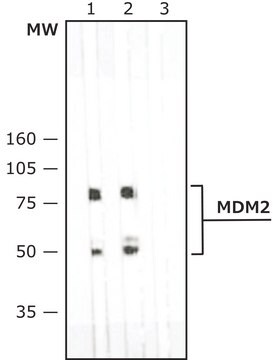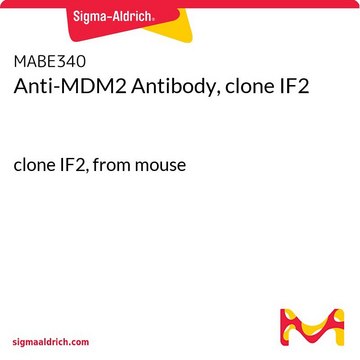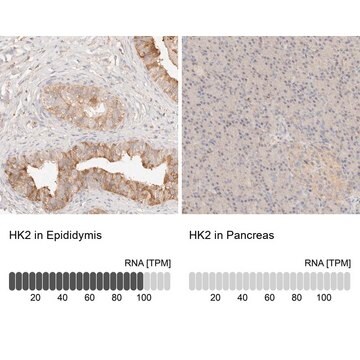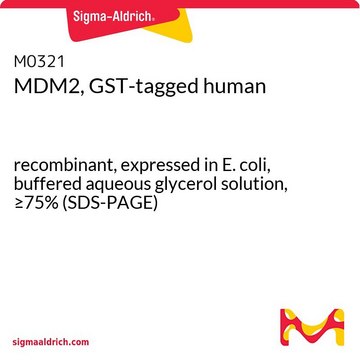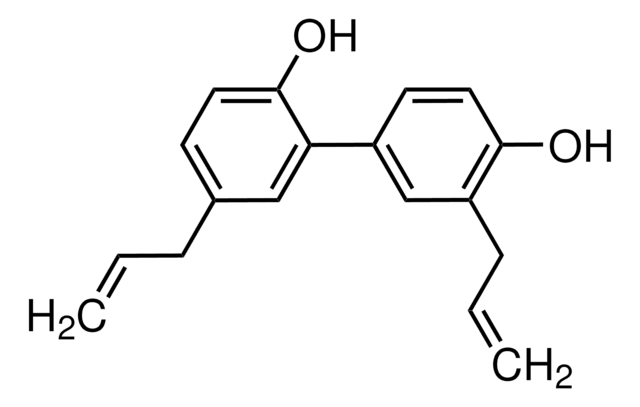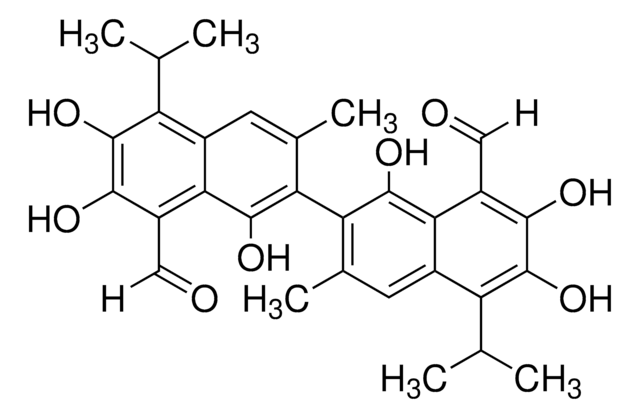Wichtige Dokumente
M4308
Monoclonal Anti-MDM2 antibody produced in mouse
clone SMP14, ascites fluid
Synonym(e):
Anti-ACTFS, Anti-HDMX, Anti-LSKB, Anti-hdm2
About This Item
Empfohlene Produkte
Biologische Quelle
mouse
Qualitätsniveau
Konjugat
unconjugated
Antikörperform
ascites fluid
Antikörper-Produkttyp
primary antibodies
Klon
SMP14, monoclonal
Mol-Gew.
antigen ~90 kDa (additional band of approx. 55 kDa)
Enthält
15 mM sodium azide
Speziesreaktivität
human, rat, mouse (weak)
Methode(n)
immunocytochemistry: suitable
immunohistochemistry (formalin-fixed, paraffin-embedded sections): suitable
immunohistochemistry (frozen sections): suitable
immunoprecipitation (IP): suitable
indirect ELISA: suitable
microarray: suitable
western blot: 1:1,000 using a whole extract of transfected 293T (human embryonal kidney) cells expressing human MDM2
Isotyp
IgG1
UniProt-Hinterlegungsnummer
Versandbedingung
dry ice
Lagertemp.
−20°C
Posttranslationale Modifikation Target
unmodified
Angaben zum Gen
human ... MDM2(4193)
mouse ... Mdm2(17246)
rat ... Mdm2(246362)
Suchen Sie nach ähnlichen Produkten? Aufrufen Leitfaden zum Produktvergleich
Allgemeine Beschreibung
Spezifität
Immunogen
Anwendung
- immunoblotting
- immunoprecipitation (1 μg/ml)
- fluorescence-activated cell sorting (FACS)
- immunofluorescence (1:200)
- immunohistochemistry
- confocal immunofluorescence
- immunocytochemistry
- enzyme-linked immunosorbent assay (ELISA)
Biochem./physiol. Wirkung
Physikalische Form
Lagerung und Haltbarkeit
Haftungsausschluss
Sie haben nicht das passende Produkt gefunden?
Probieren Sie unser Produkt-Auswahlhilfe. aus.
Empfehlung
Lagerklassenschlüssel
10 - Combustible liquids
WGK
nwg
Flammpunkt (°F)
Not applicable
Flammpunkt (°C)
Not applicable
Hier finden Sie alle aktuellen Versionen:
Besitzen Sie dieses Produkt bereits?
In der Dokumentenbibliothek finden Sie die Dokumentation zu den Produkten, die Sie kürzlich erworben haben.
Kunden haben sich ebenfalls angesehen
Unser Team von Wissenschaftlern verfügt über Erfahrung in allen Forschungsbereichen einschließlich Life Science, Materialwissenschaften, chemischer Synthese, Chromatographie, Analytik und vielen mehr..
Setzen Sie sich mit dem technischen Dienst in Verbindung.


